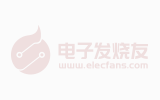
资料下载

基于硅的射频前端的超宽带无线电
Ultra-wideband (UWB) technology enables high data-rate short-range communication,
in excess of hundred megabit-per-seconds and up to multi-gigabit-per-seconds,
over a wide spectrum of frequencies, while keeping power consumption at low levels.
This low power operation results in a less-interfering co-existence with other
existed communication technologies (e.g., UNII bands).
In addition to carrying a huge amount of data over a distance of up to 230 feet
at very low power (less than 0.5mW), the UWB signal has the ability to penetrate
through the doors and other obstacles that tend to reflect signals at more limited
bandwidths and higher power densities.
The key attributes of UWB technology, therefore, include; high data rates,
ranging and communication applications, low equipment cost, and immunity to
the multipath fading. These features have motivated the researchers to investigate
performance-optimized integrated circuit (IC) solutions for UWB technology.
To best utilize the entire UWB spectrumspecified by the FCC from 3.1GHz up to
10.6 GHz, the constituent transceiver should operate across this wide spectral band.
On the other hand, designing RF front-end circuits, particularly in CMOS technology,
for UWB transceivers entails stringent challenges associated with wideband
requirements. In fact, the RF front-end has to exhibit wideband RF characteristics
of gain, noise figure, and linearity, as well as low power consumption. The scope of
this book includes design and analysis of novel wideband RF front-ends for UWB
transceivers in silicon technologies. A great deal of emphasis will be made on the
exploration of new performance-optimized distributed integrated circuit topologies
for UWB wireless radios.

声明:本文内容及配图由入驻作者撰写或者入驻合作网站授权转载。文章观点仅代表作者本人,不代表电子发烧友网立场。文章及其配图仅供工程师学习之用,如有内容侵权或者其他违规问题,请联系本站处理。 举报投诉
- 相关下载
- 相关文章




